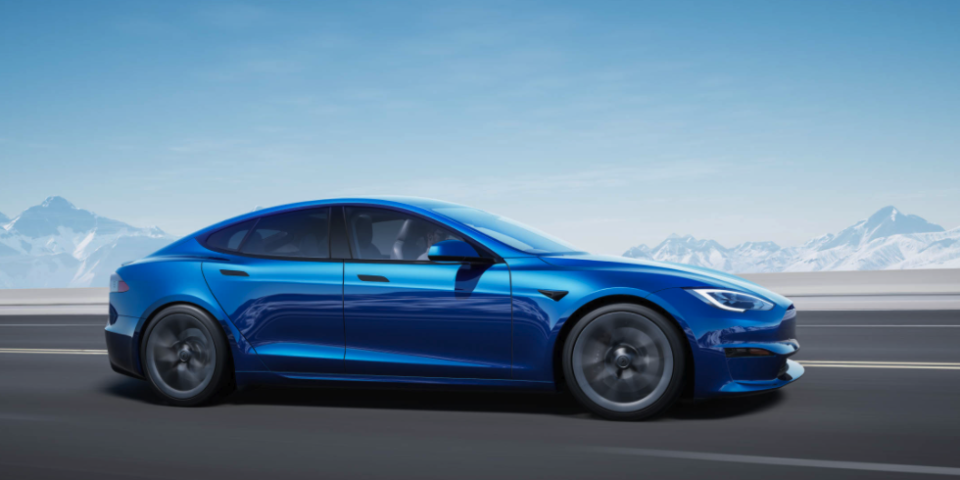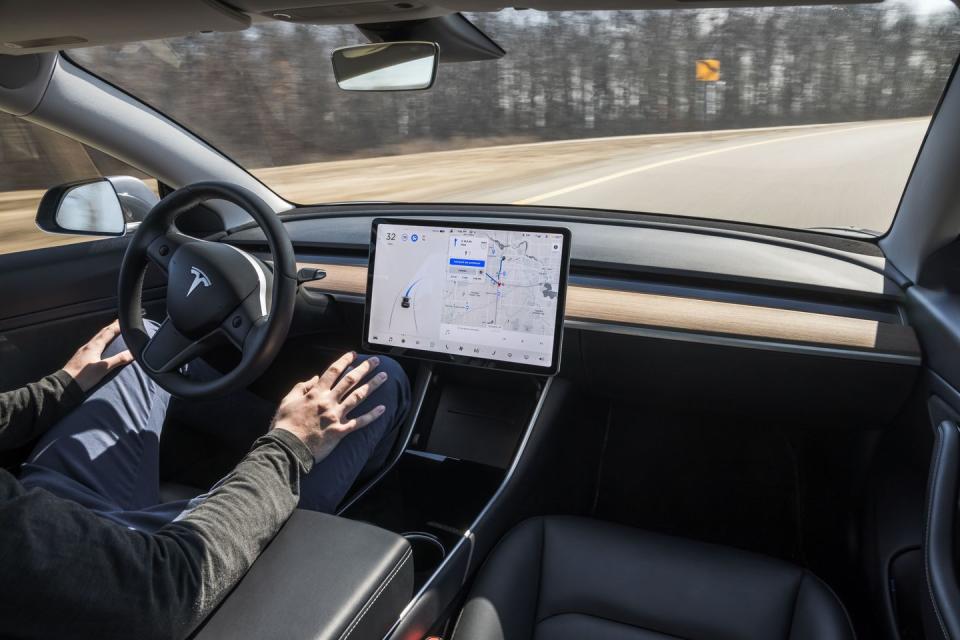Tesla Drivers Using Autopilot Watch the Road Less, MIT Study Shows

Any news story with Tesla in the headline gets attention. So it's not surprising crashes involving the company's "Autopilot" function seem to get more news coverage than those in other makes.
A new study has now provided data on how drivers using Autopilot behave. Its conclusion may seem obvious: They remove their gaze from the road longer, and more often, than when not using it. That is, when a Tesla travels at a set speed but keeps itself within lane markings and a safe distance from cars ahead, drivers' attention can—and will—wander.
The study, in the journal Accident Analysis & Prevention, was written by four researchers at the Massachusetts Institute of Technology's Agelab, a multidisciplinary research program that works to improve the quality of life of older people. The researchers created a model based on observations of driver eye focus before and after they disengaged Autopilot in 290 separate cases. The paper is titled "A model for naturalistic glance behavior around Tesla Autopilot disengagements."
Its conclusion is stark: When Autopilot was active, “drivers looked less on-road and focused more on non-driving related areas, compared to after the transition to manual driving.” Moreover, the longer time drivers spent looking away from the road in front of them “were not compensated by longer glances ahead” when they did return to watching the road.
Advanced driver-assistance systems (ADAS) have been with us for years. One of the first was adaptive cruise control—which required drivers to steer the car, but let them take their feet off the pedals. Automated emergency braking and active lane control (lane-keeping assist) are now available in many vehicles on the road, along with blind-spot alerts, rear cross-traffic braking for parking lots, and a host of other such features. As AAA noted in a research paper three years ago, these systems combined might prevent 40 percent of crashes, 27 percent of injuries, and 29 percent of deaths if they were fitted to every U.S. vehicle.
The tricky part comes when individual ADAS functions are integrated into a system offering the possibility for the car to pilot itself on highways for longer periods without driver intervention. The ultimate goal is "hands off" capability as well as the existing "feet off" capability. But if drivers don't have to use hands or feet to drive, how do we ensure they remain attentive enough to retake control when the car needs to hand back control because its algorithms don't know what to make of new sensor data?
"All the hands-free systems coming to market—including GM's Super Cruise, Ford's BlueCruise, Nissan's ProPilot 2.0—utilize infrared cameras to track driver head pose and eye gaze," explained Sam Abuelsamid, a principal research analyst at Guidehouse Insights, who has long studied automated safety systems.
He ran down the different ways automakers try to keep drivers attentive once they no longer have to steer. Abuelsamid suggests such eye-tracking systems are "far superior to the steering-torque sensors used by hands-on systems including Tesla's AutoPilot, Ford's Copilot 360+, Nissan ProPilot, Volvo Drive Pilot" and others.
Not only does Tesla use the less effective of these two methods, but devices to mimic the input of a driver's hands on a Tesla steering wheel have been sold commercially. Meanwhile, videos of drivers doing dangerous stunts like riding in the back seat of a Tesla on Autopilot get enormous traffic from social media.

Is Tesla Treated Unfairly?
So Tesla is often the subject of headlines rarely applied to other makers. On Tuesday, Reuters titled a news story, “A life and death question for regulators: Is Tesla's Autopilot safe?“ Its report noted that safety regulators have reviewed 33 separate Tesla crashes since 2016 during which Tesla ADAS systems were suspected to have been in use. In three of them, the U.S. National Highway Traffic Safety Administration (NHTSA) ruled out Autopilot use as a cause of a nonfatal crash.
"Personally, I'd be in favor of mandating infrared-based drive eye tracking for all vehicles, regardless of automation level,” Abuelsamid told Car and Driver. "It would be a much more effective deterrent to driver distractions like using the phone—as well as drowsy driving—than any laws that prohibit use of handheld devices."
Tesla claims Autopilot is safer than human drivers when used properly, though its data has been questioned in various critiques. It may take full forensic examinations of all such crashes by NHTSA to settle the question of how safe, or unsafe, the system is. Until then, the MIT study has now added data on what drivers do while using Autopilot to that discussion.
You Might Also Like

 Yahoo Autos
Yahoo Autos 